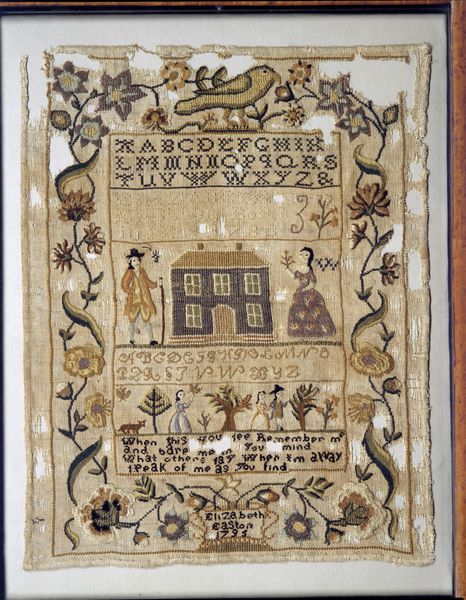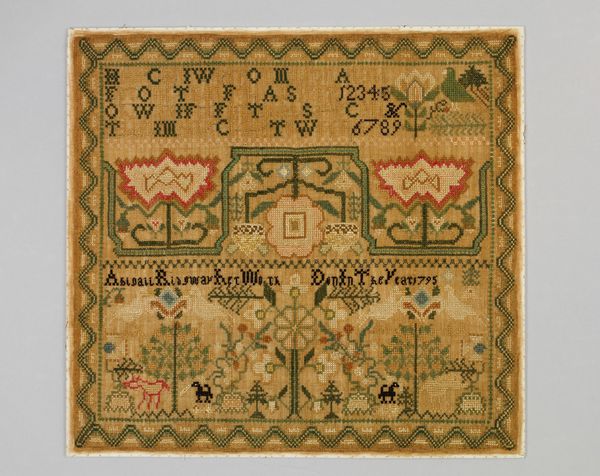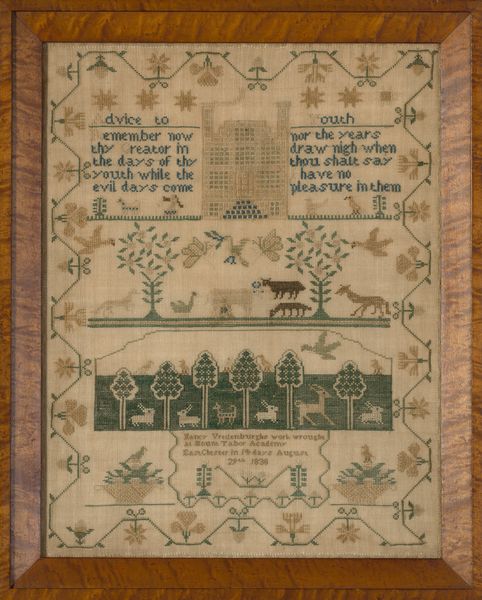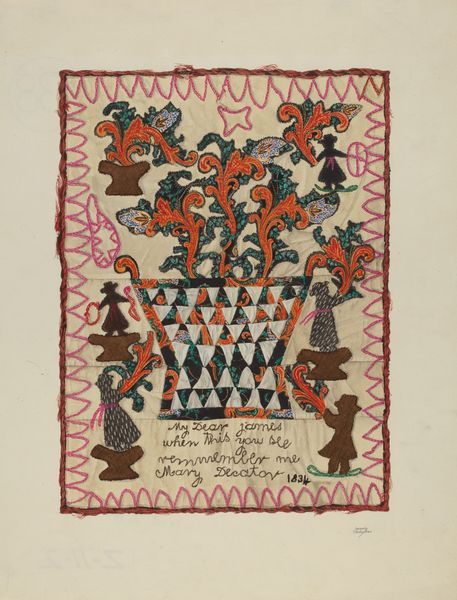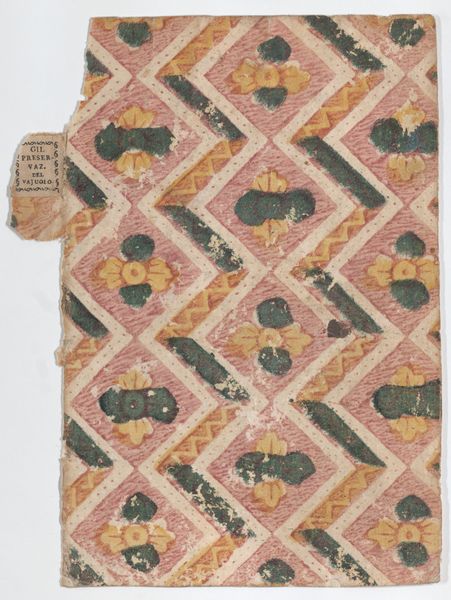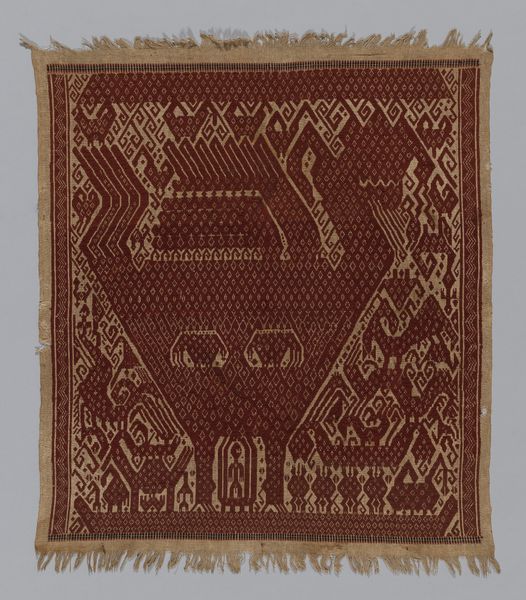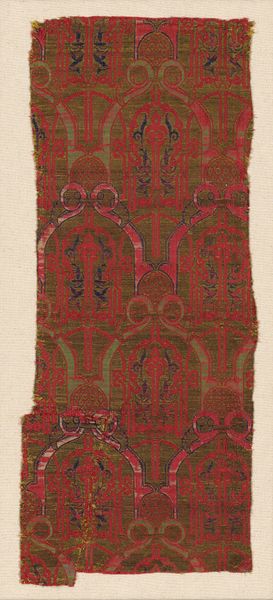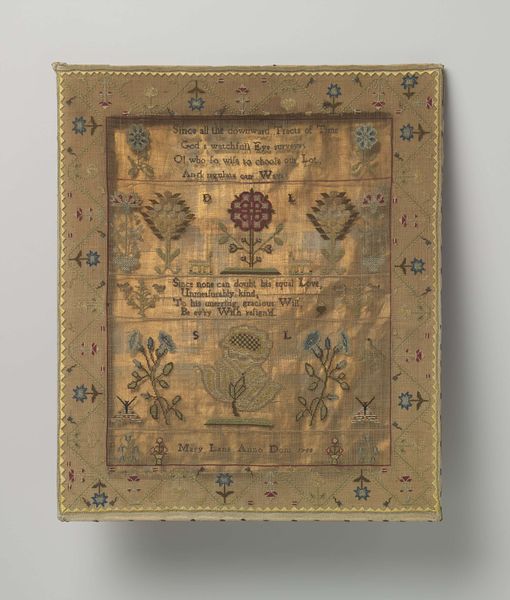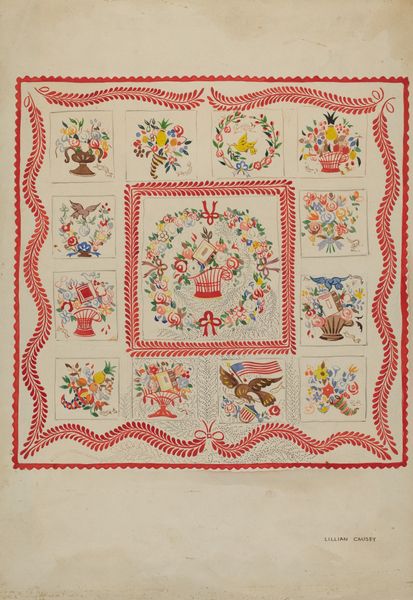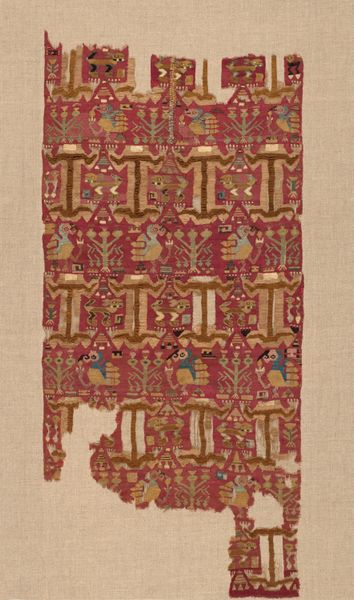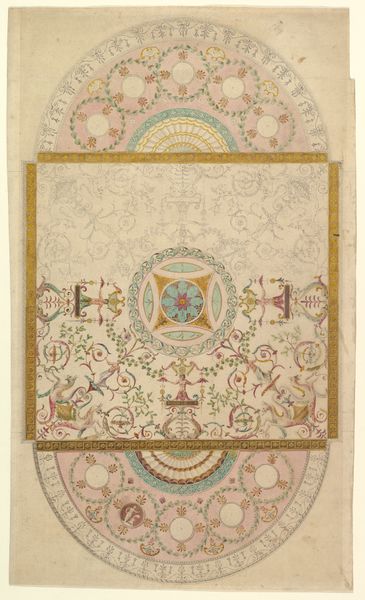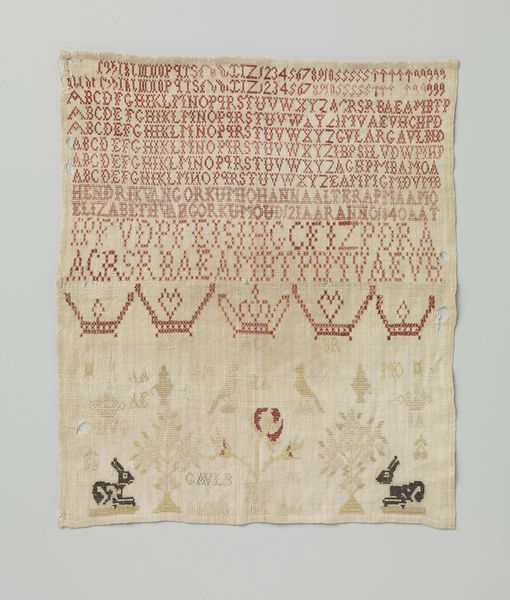
drawing, fibre-art, textile
#
drawing
#
fibre-art
#
water colours
#
traditional media
#
textile
#
text
#
academic-art
#
decorative-art
Dimensions: 62.9 × 44.5 cm (24 3/4 × 17 1/2 in.)
Copyright: Public Domain
Curator: Well, this is charming. It almost feels like a whispered secret from another era. A handmade, stitched-together reverie. Editor: Indeed. What we're looking at is a textile work titled "Sampler," created in 1852 by Eliza Ryan. It's held at The Art Institute of Chicago. Right away I notice the careful stitching, almost meditative. I feel instantly grounded looking at the muted natural tones of the ground material. Curator: Yes, grounded, that's perfect. And the way the colors pop, like little bursts of memory against the beige canvas. It feels incredibly personal, like peeking into Eliza's inner world. Editor: Absolutely. Samplers like these served multiple functions, beyond mere decoration. They were often exercises for young girls to practice and display their needlework skills and literacy, signaling both domestic competence and social standing. In Eliza's case we can see her stitching in lines of the alphabet, which is immediately above images of flora and fauna and architectural details that ground the scene in a particular aesthetic and aspiration. Curator: You know, seeing the alphabet right at the top...it almost feels like she’s writing her own language, stitching her identity onto the cloth, letter by careful letter. A form of radical self-inscription. I wonder if this was a conscious decision to create the first sampler this way, or if it’s possible the constraints created the style. Editor: An interesting thought about her authorship and control! The traditional structure of the sampler served as both framework and constraint, perhaps leading to subversive ingenuity within its confines, although its hard to be sure whether she was in on the subversion! It’s possible the constraints did provide freedom, which could be very on brand for her time and gender. I keep considering all the social and material limitations faced by women in Eliza’s time, but how stitch by stitch this tangible testament exists. Curator: I think that you're so right, though! Each stitch tells a story not just of technique, but of patience, creativity, and perhaps even rebellion within the everyday. Now I think, more than ever, that it's beautiful that she gets the last "stitch" in creating the first piece. Editor: Ultimately, "Sampler" encourages a deeper exploration into the narratives and people interwoven into the artwork's historical tapestry, challenging assumptions of both feminine submission and subversion. Curator: I agree completely. Thank you for that brilliant insight. For me it transforms a seemingly simple sampler into a powerful declaration of self. Editor: And for me it serves as a profound meditation on the many lives embedded into singular historical relics and artistic outputs, and our duty to engage in both critique and stewardship.
Comments
No comments
Be the first to comment and join the conversation on the ultimate creative platform.

